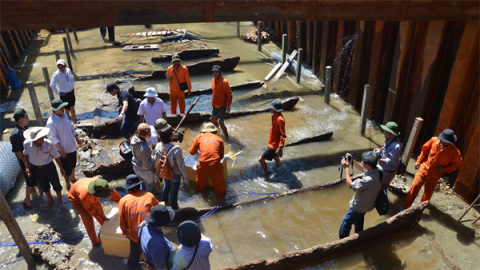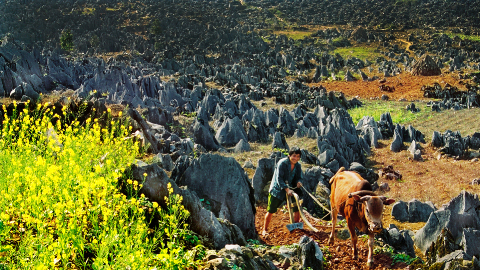Ghenh Da Dia is located in An Ninh Dong commune, Tuy An district, Phu Yen province. This has long been a famous tourist destination because of its unique rock structure that can only be found in some Southeast Asian countries, belonging to the rare category in the world. Seen from above, the rock layers look like giant wasp nests, the most familiar are the hexagonal vertical pillars that look like stacks of plates on top of each other.
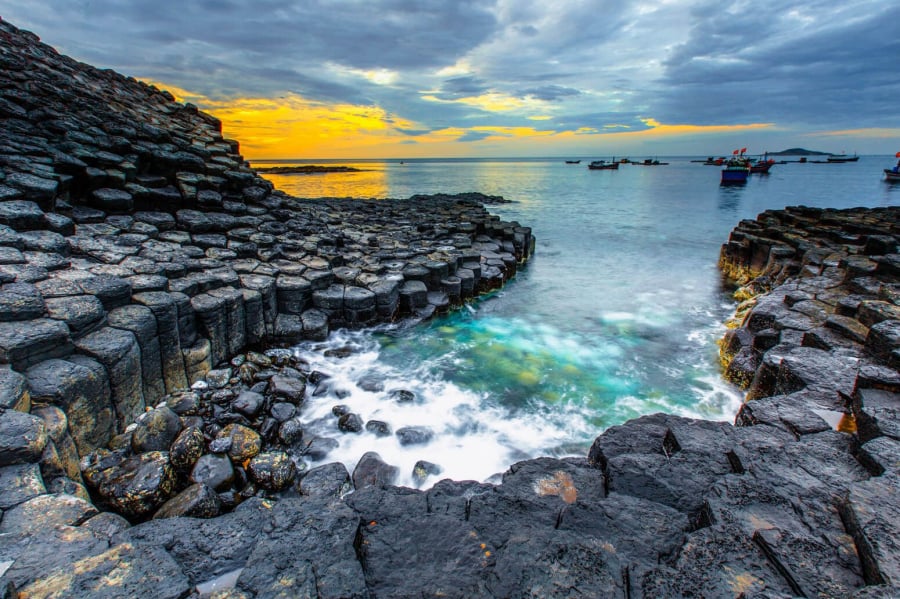
Ghenh Da Dia has long been a must-see attraction when visiting Phu Yen.
For many years, people thought that Ghenh Da Dia in Phu Yen was the only scenic spot in Vietnam that had that rock structure. However, recently, this province has announced the discovery of 4 other locations that also possess unique rock formations, creating a "brother" system for Ghenh Da Dia, as well as forming a number of new tourist attractions.
First is Hon Da Dia, located close to the shore in Nhon Hoi village, An Hoa commune, Tuy An district. Local people here call it Hon Yen because in the past, swiftlets flew all over the island. This is a small island 70 m high, about 200 m in diameter and has a rocky surface. The outer surface of Hon Yen has a structure like the extremely beautiful Ghenh Da Dia.
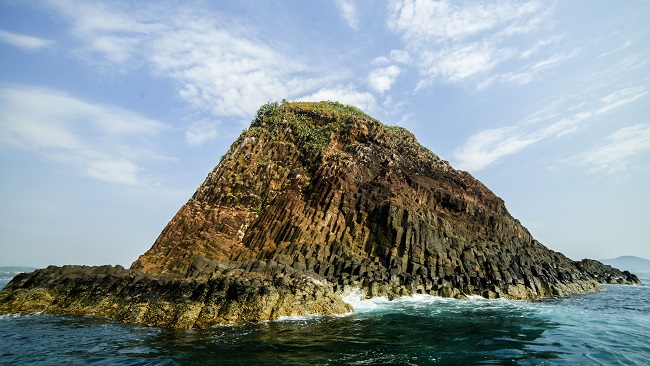
Hon Da Dia or Hon Yen has the same outer rock structure as Ghenh Da Dia.
Also in Tuy An district, there are two other "brothers" of Ghenh Da Dia. That is the Da Dia waterfall area, including Song valley (also known as Doi waterfall, Husband and Wife waterfall) and Hom valley (also known as Don waterfall). The waterfalls here all have lakes, surrounded by beautiful stone disc structures. The lakes are not very large and not deep, making it possible to swim in the dry season.
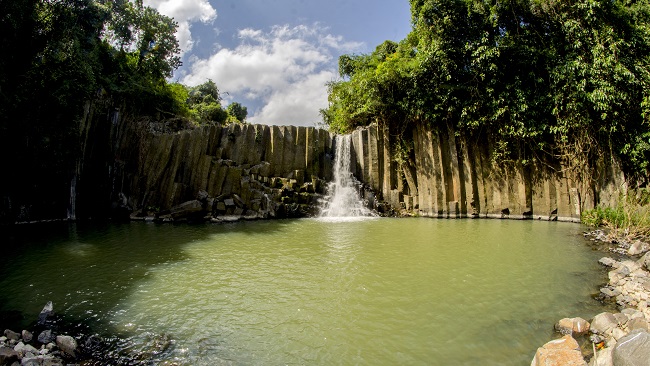
Da Dia Waterfall area with poetic lake.
Third is Da Dia stream in An Xuan commune, Tuy An district with Tra Coi abyss, Da Dia valley and cliff in Region 7. Although it is a "neighboring" area with Da Dia waterfall, the structure is not exactly the same, but still possesses unique and different landscapes. However, compared to the two names above, this place is still quite wild and has not been exploited for tourism.

The walls at Suoi Da Dia area remain pristine.
Finally, the newly discovered Stone Plate Hill in An Phu Commune, Tuy Hoa City. The hill was exposed during the quarrying process, with giant stone plate walls lying just half a meter above the ground. There are countless different structures here, creating many unique shapes, even the colors change. After receiving the information, the provincial leaders requested to stop construction to invite experts to research and have a suitable plan.

The new Stone Plate Hill was recently discovered.
Thus, from a "lonely" Ghenh Da Dia, it now has many other "brothers" distributed in Phu Yen. It can be seen that hidden deep under the soil layers of Xu Nau seems to be a whole geological park of Da Dia in deep sleep, waiting to be awakened and exploited. The tourism potential that is already hidden in this province now has even more potential to develop.
According to geological research
Ghenh Da Dia is a type of basalt rock, formed during volcanic activity in the Van Hoa (Son Hoa) plateau, about 30 km away as the crow flies. Nearly 200 million years ago, lava erupted from the crater met cold seawater and solidified, causing a convection phenomenon, creating cracks in the entire giant rock mass. The rock cracked vertically, forming vertical or horizontal columns, while there were also horizontal cracks that cut the rock columns into many sections.





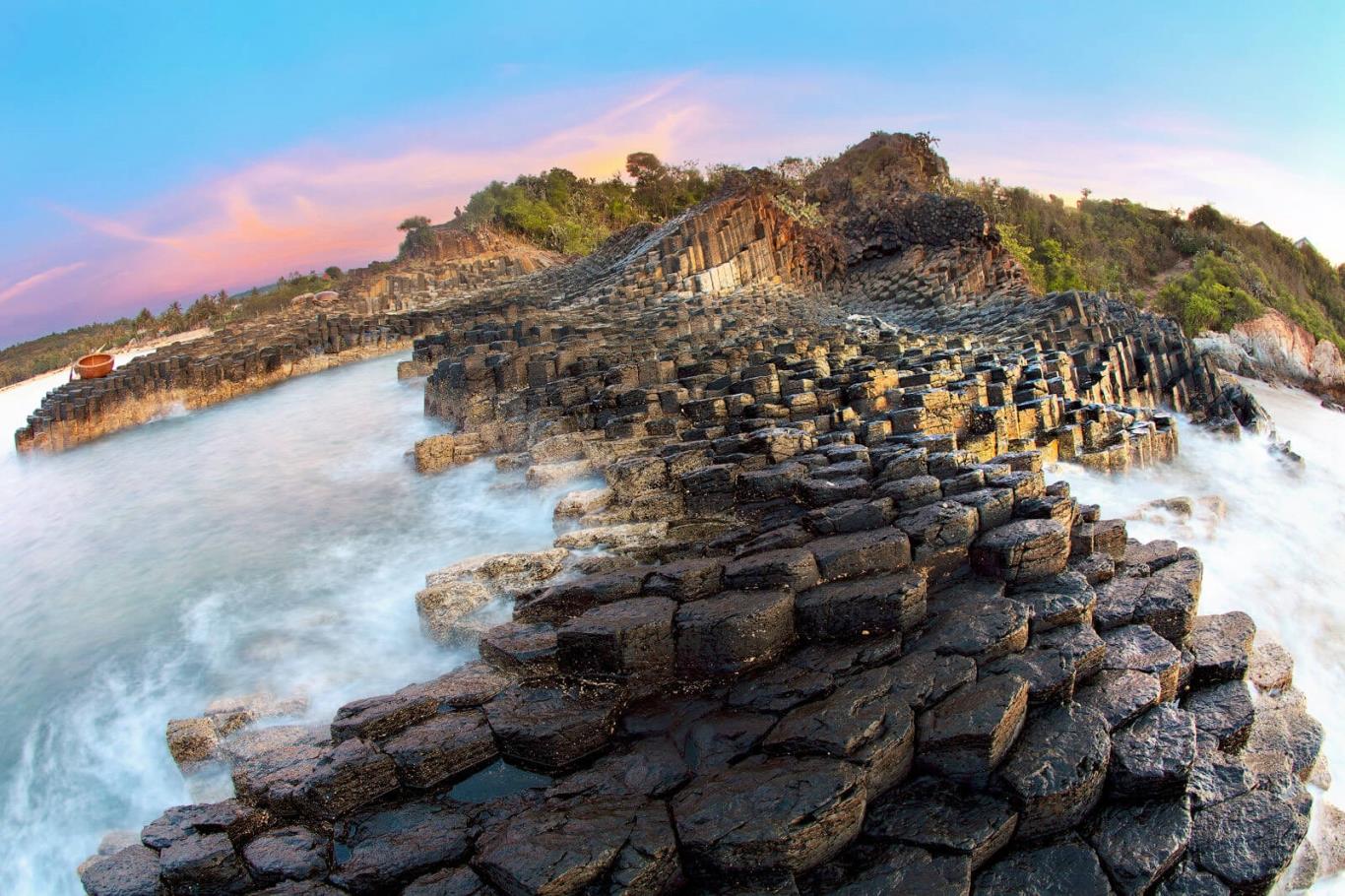









.jpg.jpg)

(Copy).jpg.jpg)







